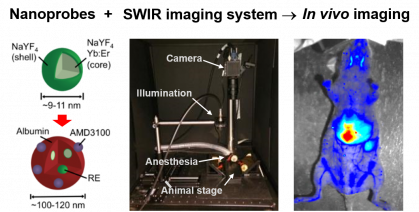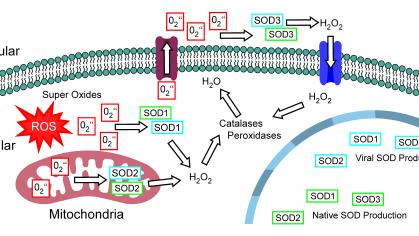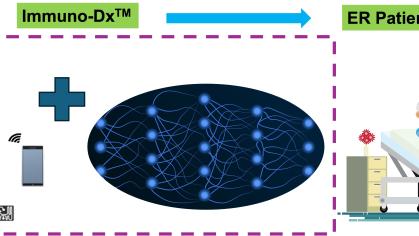Novel Short-Wave Infrared Guided Pre-clinical Screening for Personalized Cancer Therapy With NanoInk Imaging System (NIS)
Inventor(s): Prabhas Moghe, Richard Riman, Charles Roth, Mei-Chee Tan, Dominik Naczynski
Awarded: July 2021
Summary:
The technology underlying this project is an imaging contrast agent based on rare-earth-doped nanoparticles encapsulated in a protein shell. This shell renders the nanocomposites biocompatible and also allows for conjugation of ligands targeting specific biomarkers in live mice. The encapsulated nanocomposites emit infrared light which can travel through tissue with minimal attenuation and negligible background level. This enables small lesions to be labeled with the contrast agent and imaged non-invasively within the body.
These nanoparticles allow small lesions to be detected earlier and deeper within the body compared to existing approaches, which either lack spatial resolution (ultrasound), molecular sensitivity (MRI), or involve ionizing radiation (X-ray / CT, PET). These methods are also expensive and/or suffer from low animal throughput. Bioluminescence imaging (BLI) shares some of the advantages of optical methods, but requires genetic modification of cells and produces relatively weak optical signals.
The ability to study tumor development and response to candidate drugs longitudinally in individual animals is critical for improving our understanding of disease and for selecting therapeutic compounds to advance into human trials. This technology will be used by pre-clinical disease screening and drug discovery / development groups in oncology (academic research labs, pharmaceutical companies, and CROs).
Market Applications:
- Pre-clinical imaging
- Drug discovery
- Personalized medicine
- Academic research




